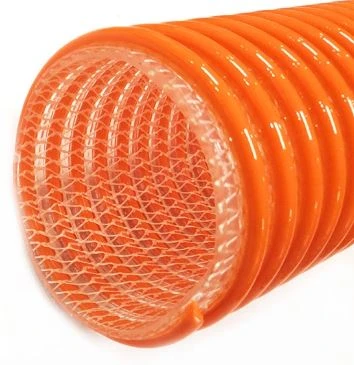pneumatic tubing material
Understanding Pneumatic Tubing Materials An Overview
Pneumatic systems are essential in various industrial applications, relying on compressed air to operate machinery and tools efficiently. The components of these systems, especially the tubing, play a crucial role in ensuring their effectiveness. Pneumatic tubing materials vary widely, each offering unique characteristics that influence performance, durability, and cost. In this article, we will delve into the common materials used for pneumatic tubing and their specific applications.
1. Polyurethane (PU)
Polyurethane is a popular choice for pneumatic tubing due to its excellent flexibility and resistance to abrasion. This material is particularly advantageous in environments where the tubing needs to be bent or flexed frequently. PU tubing can handle a wide range of temperatures, typically from -40°C to +80°C, making it suitable for both indoor and outdoor applications. Furthermore, it is resistant to various chemicals, enhancing its durability in industrial settings. Due to its lightweight nature, polyurethane tubing is also ideal for portable applications and tools.
2. Polyvinyl Chloride (PVC)
PVC is another commonly used material in pneumatic tubing. It is known for its good chemical resistance and excellent system stability. PVC tubing is rigid yet can be produced in various hardness levels, allowing for flexibility in application. While it does not possess the same degree of flexibility as PU, it is often chosen for applications that require a more permanent and stable setup. Additionally, PVC is cost-effective, making it a popular choice for budget-conscious projects. However, the temperature range for PVC is more limited, typically ranging from -10°C to +60°C.
3. Nylon
pneumatic tubing material

Nylon tubing offers high strength and excellent resistance to impacts, making it suitable for high-pressure applications. Its thermal stability allows it to withstand temperatures up to 100°C, and it effectively resists many chemicals, contributing to its versatility. Nylon tubing is relatively lightweight, which can be beneficial for streamlined operations in machinery. It is often utilized in automotive, aerospace, and agricultural applications where resilience is required. Moreover, its ability to self-extinguish in case of fire adds an extra layer of safety in industrial environments.
4. Polyethylene
Polyethylene (PE) tubing is known for its good chemical resistance and weldability. It is commonly used in low-pressure applications and is suitable for various types of fluids, including water and oil. While it is less flexible than polyurethane, it remains a cost-effective choice for pneumatic systems that do not require rigorous flexibility or high pressures. PE tubing is often employed in food processing and packaging industries due to its non-toxic properties, ensuring it meets regulatory standards for hygiene and safety.
5. Metal Tubing
Metal tubing, such as aluminum or stainless steel, is chosen for its durability and strength in high-pressure applications. Metal tubes are typically rigid and can withstand extreme temperatures, making them a preferred choice for demanding environments. They are less vulnerable to damage and can provide longer-lasting solutions compared to plastic options. However, metal tubing tends to be heavier, which may affect the design and maneuverability of pneumatic systems. Proper installation and maintenance are essential to prevent corrosion and ensure longevity.
Conclusion
Choosing the right pneumatic tubing material is critical for the performance and longevity of pneumatic systems. Each material presents distinct advantages, making it important to consider the specific requirements of the application. Factors such as pressure, temperature, flexibility, and environmental conditions must all be evaluated when selecting tubing. By understanding the characteristics of polyurethane, PVC, nylon, polyethylene, and metal tubing, industries can optimize their pneumatic systems effectively, ensuring safe and efficient operations. As technology advances, the development of new materials may continue to enhance the performance and reliability of pneumatic systems, paving the way for innovative industrial applications.
-
Unrivaled Performance and Applications of PU Pneumatic Hoses and TubesNewsJun.11,2025
-
The Transparent World of Industrial Tubing and Hosing SolutionsNewsJun.11,2025
-
The Intricate World of Pneumatic Conduits: Tubes and HosesNewsJun.11,2025
-
The Dynamic Landscape of Pneumatic Conduits: Unraveling Key ComponentsNewsJun.11,2025
-
The Diverse Applications and Significance of Transparent PVC TubingNewsJun.11,2025
-
High - Pressure Pneumatic Tubing and Systems: An In - Depth LookNewsJun.11,2025














